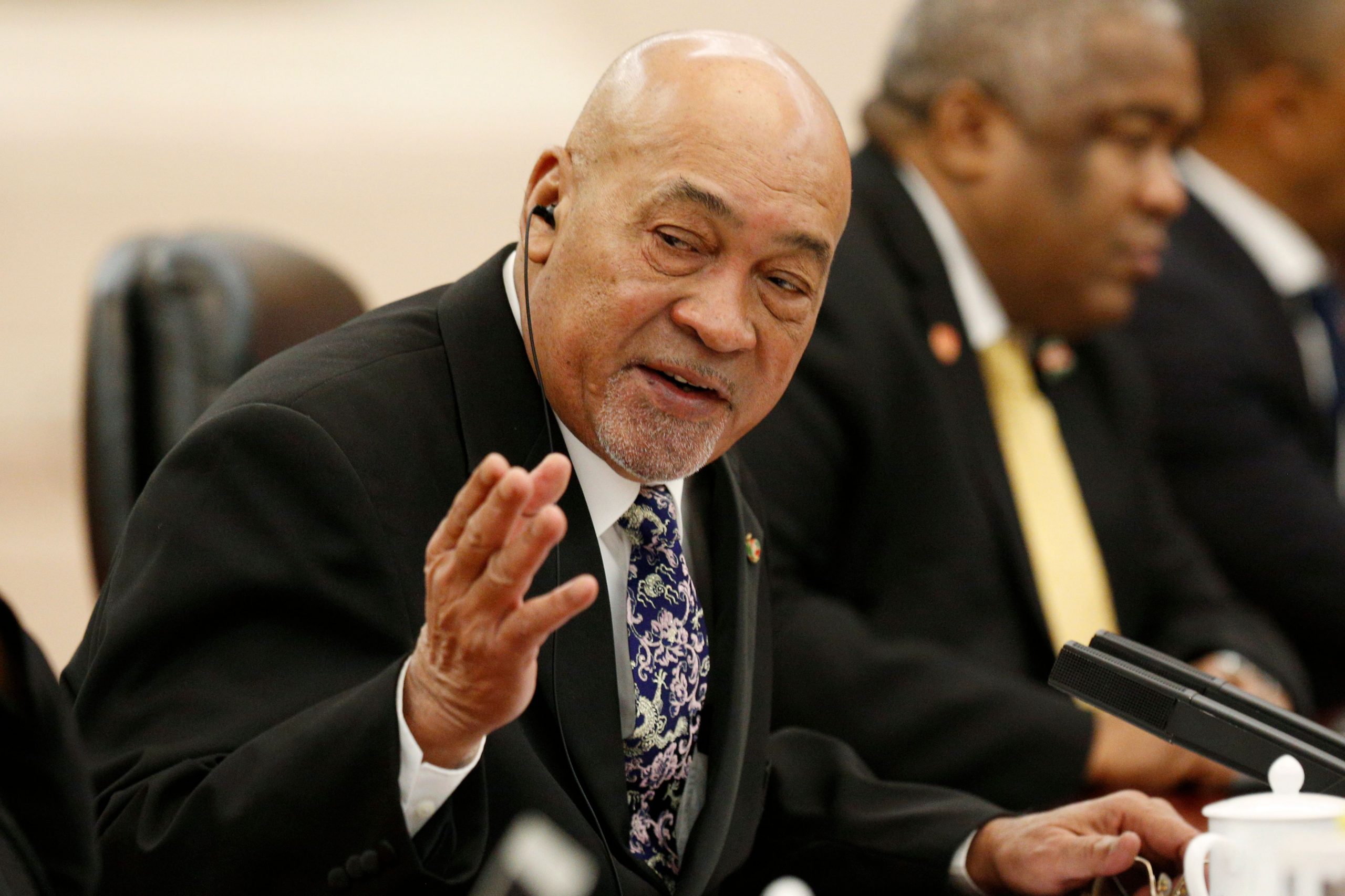(BBC) American voters were going to the polls into the evening on Tuesday to choose their next president.
US election results are sometimes declared state-by-state within hours of the polls closing – meaning that we get a running tally as we go – but this year’s tight contest could mean a longer wait.
When is the 2024 presidential election result expected?
The first polls closed at 18:00 EST (23:00 GMT) on Tuesday evening. The last will close at 01:00 EST (06:00 GMT) early on Wednesday.
In some presidential races, the victor has been named late on election night, or early the next morning.
This time, the knife-edge race in many states could mean media outlets wait longer before projecting who has won.
Democratic Vice-President Kamala Harris and Republican Donald Trump, the former president, have been running neck-and-neck for weeks.
Narrow victories could also mean recounts.
In the key swing state of Pennsylvania, for example, a recount would be required if there’s a half-percentage-point difference between the votes cast for the winner and loser. In 2020, the margin was just over 1.1 percentage points.
Legal challenges are also possible. More than 100 pre-election lawsuits have already been filed, mostly by Republicans challenging voter eligibility and voter roll management.
Other scenarios that could cause delays include any election-related disorder, particularly at polling locations.
On the other hand, vote-counting has sped up in some areas, including the crucial state of Michigan, and fewer votes have been cast by mail than in the last election, which was during the Covid pandemic.
When have previous presidential election results been announced?
In the 2020 election, US TV networks did not declare Joe Biden the winner until four days after election day, when the result in Pennsylvania became clearer.
In other recent elections, voters have had a much shorter wait.
In 2016, Trump was declared the winner shortly before 03:00 EST (08:00 GMT) a few hours after polls closed.
In 2012, when Barack Obama secured a second term, his victory was projected before midnight the same evening of election day.
However, the 2000 election between George W Bush and Al Gore was a notable exception. The race was not decided for five weeks, when the US Supreme Court voted to end Florida’s recount. That kept Bush in place as winner and handed him the White House.
What are the swing states to watch and when might they declare?
The race is expected to come down to results from seven swing states, which experts believe Harris and Trump both have a realistic chance of winning.
Turnout has been high in early voting, both in-person and by mail, with records broken in Georgia.
Georgia – Polls close in the Peach State at 19:00 EST (00:00 GMT). Georgia’s top election official estimates that about 75% of votes will be counted within the first two hours.
North Carolina – Polls close 30 minutes after Georgia. North Carolina’s results are expected to be announced before the end of the night.
Pennsylvania – Voting ends at 20:00 EST (01:00 GMT) but experts agree it may take at least 24 hours before enough votes are counted for a winner to emerge.
Michigan – Voting concludes at 21:00 EST (02:00 GMT). A result is not expected until the end of Wednesday.
Wisconsin – Results should come in shortly after polls close at 21:00 EST for smaller counties but experts predict the state won’t have a result until at least Wednesday.
Arizona – Initial results could come as early as 22:00 EST (03:00 GMT) but the state’s largest county says not to expect results until early Wednesday morning. Postal ballots dropped off on election day could take up to 13 days to count.
Nevada – Votes here could also take days to count. The state allows mail-in ballots as long as they were sent on election day and arrive no later than 9 November.
Why should we be cautious of early voting data?
In such a tight race, early vote results may not be the best indication of who will eventually win.
In 2020, Trump was leading in some key states on election night but Biden overtook him as mail ballots, heavily favoured by Democrats at the time, were counted.
Though election experts warned beforehand of such a phenomenon, Trump seized upon it to amplify his unfounded claims that the election was stolen.
There could be another so-called “red mirage” this year – or perhaps a “blue mirage” that initially favours Harris but then shifts toward Trump.
More than 83 million Americans have already voted, according to the University of Florida Election Lab’s nationwide early vote tracker. Women make up 54% of that tally, which could be a good sign for Harris.
But while early voting has typically favoured Democrats, registered Republicans have cast nearly as many early votes this time around.
How does the vote-counting work?
Typically, the votes cast on election day are tallied first, followed by early and mail ballots, those that have been challenged, and then overseas and military ballots.
Local election officials – sometimes appointed, sometimes elected – verify, process and count individual votes, in a process known as canvassing.
Verifying ballots includes comparing the number cast with the number of active voters; removing, unfolding and examining every single ballot for tears, stains or other damage; and documenting and investigating any inconsistencies.
Counting ballots involves feeding each one into electronic scanners that tabulate their results. Some circumstances require manual counts or double-checked tallies.
Every state and locality has rigorous rules about who can participate in the canvass, the order in which votes are processed and which parts are open to the public, including how partisan observers can monitor and intervene in vote-counting.
What happens if the presidential election results are challenged?
Once every valid vote has been included in the final results, a process known as the electoral college comes into play.
In each state a varying number of electoral college votes can be won, and it is securing these – and not just the backing of voters themselves – that ultimately wins the presidency.
Generally, states award all of their electoral college votes to whoever wins the popular vote and this is confirmed after meetings on 17 December.
The new US Congress then meets on 6 January to count the electoral college votes and confirm the new president.
After the 2020 election, Trump refused to concede and rallied supporters to march on the US Capitol as Congress was meeting to certify Biden’s victory.
He urged his Vice-President, Mike Pence, to reject the results – but Pence refused.
Even after the riot was cleared and members of Congress regrouped, 147 Republicans voted unsuccessfully to overturn Trump’s loss.
Electoral reforms since then have made it harder for lawmakers to object to certified results sent to them from individual states. They have also clarified that the vice-president has no power to unilaterally reject electoral votes.
Nevertheless, election watchers expect that efforts to delay certification of the 2024 vote could take place at the local and state level.
Trump, his running mate JD Vance and top Republican leaders on Capitol Hill have refused on several occasions to state unequivocally that they will accept the results if he loses.
What happens if there is a tie?
It is possible that the two candidates could end up in a tie because they have the same number of electoral college votes – 269 each.
In that situation, members of the House of Representatives – the lower chamber of the US Congress – would vote to choose the president in a process known as a contingent election.
Meanwhile the Senate – the upper chamber – would vote for the vice-president.
But that hasn’t happened for about 200 years.
When is the presidential inauguration?
The president-elect will begin their term in office after being inaugurated on Monday, 20 January 2025, in the grounds of the US Capitol complex.
It will be the 60th presidential inauguration in US history.
The event will see the new president sworn in on a pledge to uphold the Constitution and then deliver their inaugural address.












